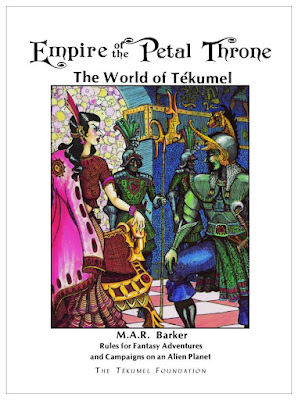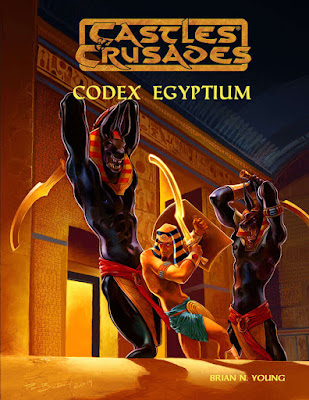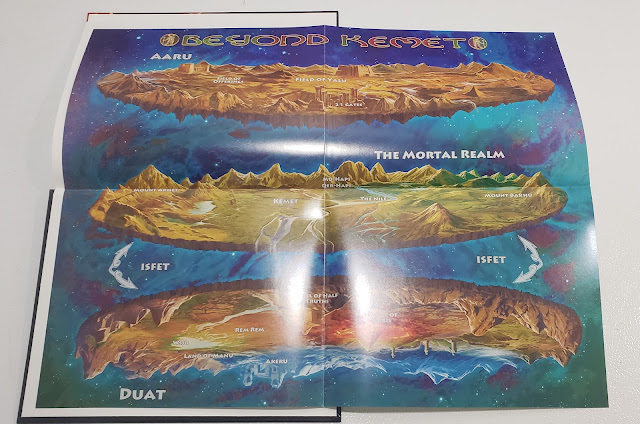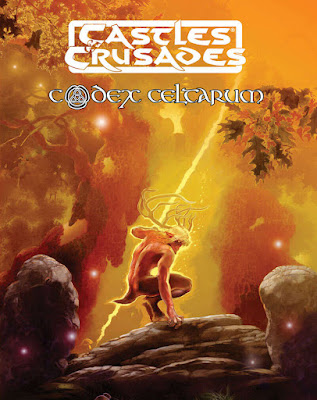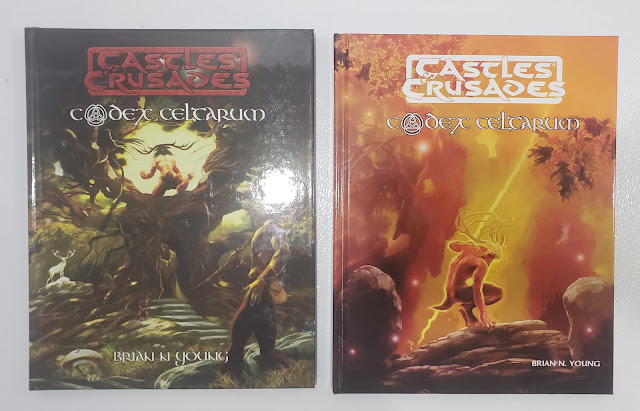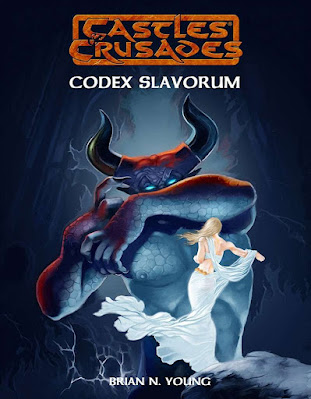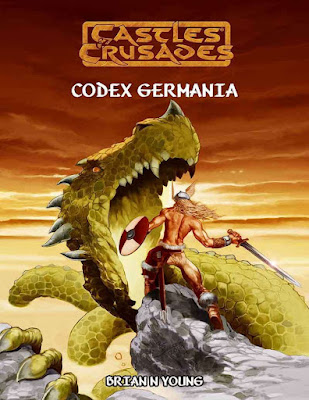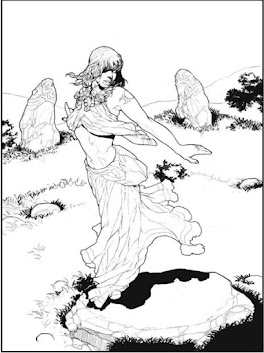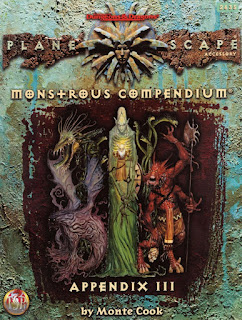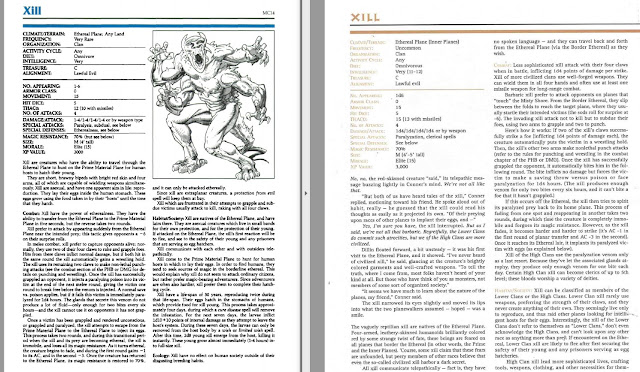Again, today is a good day for this one. I just finished my review of the
Castles & Crusades Codex Celtarum so I wanted to compare and contrast it to the earlier work on a similar topic, the
HR3 Celts Campaign Sourcebook for AD&D 2nd Edition. I reviewed the
HR1 Vikings Campaign Sourcebook a while back and always wanted to get back into the series.
HR3 Celts Campaign Sourcebook (AD&D 2nd Edition)
For this review, I am considering both the PDF and softcover copies. 96 pages with color (well, green) covers and black & white interior art. There is a color map attached to the original softcover I bought in the early 90s. The PDF has the map appended to the end. Graeme Davis is the author here. He got his RPG start with Games Workshop.
Illustrations are by Roger Raup and Cartography by Steve Sullivan.
The publication of this book is contemporaneous with the famous BBC-2 series, The Celts. The one with all the music from Enya. They do cover similar ground and if you are interested in using this for any *D&D sort of game I would recommend the series. Yes, there has been newer scholarship since then. But are you working on a dissertation or a game? The obvious choice for newer and game-related scholarship is Brian Young's Codex Celtarium for Castles & Crusades from Troll Lord Games.
Chapter 1: Introduction
This covers the question of "Who Were the Celts?" and what this book is for. The goal here is an AD&D gamebook, not one on Celtic history.
Chapter 2: A Mini-Course of Celtic History
I discussed updated scholarship above, but for pretty much any game (but especially AD&D) this chapter is a great overview of Celtic real-world history. Covering roughly 1,500 years, 600 BC to 900 AD, and all of Europe a lot does get left out. But this is enough to get you going to the right place. Today we have the advantage of the latest scholarship at the click of a mouse, but in 1992 this was what we had. Ok. That is not entirely true. Even in 1992, there was BITNET access for a lot of great articles and Usenet for talking with others. But that is beyond the scope of this conversation and this book. For an AD&D game world this will get you going rather nicely.
The timeline graphic is a nice touch.
Chapter 3: Of Characters and Combat
This covers differences from the standard AD&D 2nd Edition character creation. In particular, you will typically only have humans. Humans can get a random "gift" and possibly "sidhe" blood, but do not expect to see dwarves, elves, and halflings in great abundance.
The classes also get a facelift more or less. Fighters of course are the most important with the druids tied. Paladins are limited to Christians on the Continent. Rangers get a bit of an update. Wizards are to be used sparingly. Clerics are relegated to Christian missionaries (so St. Patrick was a Cleric!). Bards and Druids get the attention. A new class under Priests is introduced, the Manteis or Vates is the Celtic Seer.
Names and homelands are discussed along with social class. Various Warrior "feats" are also discussed. They take proficiency slots but otherwise "feel" like feats in the D&D 3/5 sense.
Chapter 4: Magic
Covers changes to spells and magic items. Also makes a distinction between "gifted" and "trained" spellcasters. If this were D&D 3rd Edition then we would call them "Sorcerers" and "Wizards" respectively.
There are new magic items and magical places characters can find themselves in.
Chapter 5: Monsters
I do love monsters. This section covers all sorts. First, we get a list of monsters that can be used unchanged. Then a section of "new" monsters, or more to the point Celtic variations on existing monsters from the Monstrous Compendiums. Then we get whole new monsters in Monstrous Compendium formats. Not a lot mind you, but enough to give some flavor.
Chapter 6: Equipment and Treasure
This covers equipment, treasure, gifts, and the barter system used. Coins are still used (and for ease mentioned in GP amounts). The big issue here is that a lot of older equipment will be Bronze Age and some will be newer Iron Age varieties. An important notion given that this is not a "Medieval" setting.
Chapter 7: The Celtic Culture
We get a brief overview of Celtic Culture through the eyes of Conall Mac Eogan. This 15-year-old is coming of age and we see how the next year of his life touches on aspects of the culture. Now obviously the events for Conall would be very different if this had been Deirdriu or Eithne we were talking about. Some discussion is given on the advanced, atypically for the time, role of Celtic women.
The topics of Fostering and Trade are also mentioned. We also get the wheel of the year (adopted by many modern pagans) and some of the gods with nods to the AD&D 2n Ed Legends & Lore book.
Chapter 8: A Brief Gazetteer
Covers the lands we typically associate with the Celts. Heavy on the British Isles and Ireland. Various "other worlds" like Avalon, Tir Na Og, and Annwvyn are also briefly discussed.
Appendix 1: Enech
The notion of Celtic honor price is given in AD&D 2nd Edition terms.
Glossary
A brief glossary of terms and names.
The PDF ends with the map and the softcover book has it as a tear-out attachment.
I did not go into this expecting graduate-level work and that is fine. It is a great source for playing in a Celtic-themed AD&D 2nd Ed game world. If the goal had been to provide AD&D 2nd Ed rules for a Celtic world then it would have needed to have been larger, but as it is it met the scope of their requirements.
This book is also 30 years old. It holds rather well really, both physically and in terms of what it needs to do, and can still be adapted to any version of D&D you care to think about.
All in all I am as happy with it now as I was when I got in 92.

